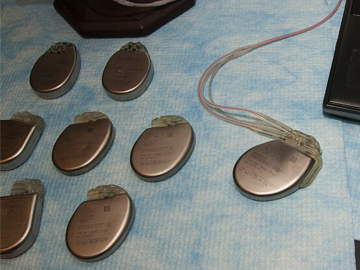Trauma Time is Crip Time
Lauren Poole
“Under which conditions is a body simply raw material for the industries of analysis?” – Billy-Ray Belcourt, NDN Coping Mechanisms: Notes from the Field, p.70.
Trauma time is crip time. It bends and fractures. It stops and starts, turning back on itself in hyper-extended loops. It laughs in the face of clocks and calendars and half-sobs as the seconds seem unable to tick by.
The problem with traumatic memory is that it often isn’t yet memory: the experience of a traumatic moment is trapped in an eternal present, unable to be re-configured normally into long-term recall and thus unable to be escaped [from]. It simply is. Now. As you read this. As I write this. And every fraction in-between. Trauma time is double time, trauma time is skipped time, trauma time is repeated time, trauma time is waking to find years have passed without your knowledge or consent.
There are a pair of old internet factoids that go along the lines of: every 7 to 10 years all the cells in your body are replaced, and every year 98% of the atoms in your body are replaced. You, at a very literal level, are not the same person you were 12 months ago, 12 years ago, or this morning. The first factoid comes from a 2005 scientific paper from the Karolinska Institute, Sweden[i]. Or, more precisely, from a misquotation of a newspaper article accompanying the paper, in an interview with one of the authors, Dr Jonas Frisén, which reads: “the average age of all the cells in an adult’s body may turn out to be as young as 7 to 10 years old”.[ii] Using the unique mid-twentieth century boom-and-bust in atmospheric carbon-14 (14C) with the advent of nuclear testing and then nuclear treaties, the paper paralleled atmospheric 14C with 14C levels in the genomic DNA of human cell populations “to [establish] the time point when the DNA was synthesized and the cells were born.”[iii] Because different types of human cells turn-over at different speeds (or, like parts of the occipital cortex, not at all), various parts of your body are strikingly different ages. Some parts of the intestine, for example, average an age of nearly 16 years, while other parts of the same organ are as little as five days old.[iv] Even then, Frisén only commented (in the non-peer-reviewed newspaper article) on a possible average age, not a time-frame in which all cells in the human body would be replaced.
That is, the bodily sensations in that initial traumatic moment? In a technical sense, they happened to somebody else’s body – to a body that isn’t this, your present one. Worse, they happened to a body that sort of doesn’t exist anymore. Even worse, only some parts of the present ‘you’ were there: a vestigial chunk of nervous system, a fragment of brain matter. You weren’t there and yet, somehow, you never left.
The second, atomic factoid has a more convoluted backstory. Despite being repeated by reputable broadcasters like NPR and the BBC, and in well-known books by the likes of Richard Dawkins and Steve Grand, most of these citations just refer back to each other. Some, thankfully, bolster their claim by noting the work of Dr Paul C. Aebersold. Aebersold (1910-1967) was an American nuclear scientist, the former Director of the Isotopes Division of the U.S. Atomic Energy Commission in Oak Ridge, Tennessee, and known in his public engagements, only half-jokingly, as “Mister Isotope”.[v] In the Annual Report of the Board of the Regents of the Smithsonian 1953, he wrote that:
“Tracer studies show the atomic turnover in our bodies is quite rapid and quite complete. For example, in a week or two half of the sodium atoms that are now in our bodies will be replaced by other sodium atoms. The case is similar for hydrogen and phosphorous. And even half of the carbon atoms will be replaced in a month or two. And so the story goes for nearly all the elements. Indeed, it has been shown that in a year approximately 98% of the atoms in us now will be replaced by other atoms that we take in in our air, food, and drink.”[vi]
This was a restatement from a book he co-authored in 1950 called Atoms at Work, published under the auspices of the Council of Atomic Implications (a non-profit educational corporation formed in 1946 at the University of Southern California).[vii] And even that was a restatement from a 1949 address he gave before The Teachers’ In-Service Course on Atomic Energy.[viii] Despite my best efforts, this is where the historiographic trail runs cold: I have been unable to find Aebersold’s original studies, which all these re-statements are nested upon. The originals are gone, and all that remains are fragmented, re-worked, self-looping, self-citing copies.
Trauma time is experienced alone, with only yourself as reference and canon. An unreliable narrator reflected and refracted a million times, waving back at oneself like a doppelganger in a hall of mirrors.
“Too much of this thinking, however, pushes me closer and closer to the first-person pronoun.” – Sam Twyford-Moore, The Rapids, p. 4.
Children who experience trauma age differently. Their cells turnover at faster rates, making them biologically older than their calendar-age peers.[ix] Even our genetics aren’t immune: children who were in-utero during the “Hongerwinter” in the Netherlands in 1944-1945 (when an estimated 18,000 people died of hunger and those who survived did so by consuming less than a quarter of the kilojoules their bodies required) were more likely to be small and underweight in childhood and “exhibit[ed] an unusual prevalence for heart disease and other metabolic disorders in middle age”.[x] Research found that the famine had enabled epigenetic changes which were likely not present in their unexposed siblings.[xi] Elsewhere, the descendants of Holocaust survivors were found to have altered levels of cortisol, and were more susceptible to developing PTSD.[xii] That is, trauma is physically and psychologically destructive, and what happened to you isn’t always yours to hold alone. Our bodies are, in a sense, simultaneously constituted and destroyed by these traumas. We are remade in trauma: body-mind and soul.
All of this assumes, of course, that the self and the body are interchangeably ‘you’. That an alteration to your atoms or your cells or the expression of your DNA is automatically an alteration of your selfhood. That your personhood and your corporeality are one and the same. I don’t know yet how I feel about that assumption, or its binary: that you are not your body, that you are somehow divorced from the physical or the literal, that you are not your impairments. I have a quotation from Lidia Yuknavitch’s memoir The Chronology of Water written on a pink sticky-note on my bedroom mirror: “The things that happen to us are true.” I wonder, now, Who is ‘us’? Who is ‘you’? How do we define these aspects of selfhood in the face of a lack of bodily continuity on almost every front?
There once was an ancient paradox called The Ship of Theseus. As Plutarch tells it, the Greek demigod Theseus, having returned from great victory, leaves his equally great ship in the harbour of Athens where it is preserved for hundreds of years. As the individual parts break-down or become damaged, they are slowly replaced, plank by plank, to keep the ship afloat. Eventually, every piece of Theseus’ ship has been replaced. But is it still Theseus’ ship? If yes, how can that be when every component part that makes up the ship’s whole is different? If no, how and when did it stop being Theseus’ ship?
I used to think the answer to this paradox was the difference between integrity and authenticity. Integrity is the completeness and originality of something: are all the original parts present and correct. Authenticity is the truthfulness and credibility of something: is it (in how it is used, how it is thought of, how it exists) the real thing. But I wonder if that’s all beside the point. In trauma time, we are always in the moment of re-making, for good or bad. We are here. Now. In this embodied moment. In this embodied body-mind. Does the knowledge of atomic or cellular turnover allow me to distance myself from that long-ago ever-present moment, or does it simply enable dissociation?
Trauma time is crip time. Trauma time is not knowing how time is passing. Trauma time is knowing agonisingly that time is passing with you. Trauma time is trying to use your body-mind as an unstable point around which to orient yourself to yourself.
“I missed myself, you want to say, but you don’t.” – Carmen Maria Machado, In the Dream House, p. 248.
[i] Kirsty L. Spalding, Ratan D. Bhardwaj, Bruce A. Buchholz, Henrik Druid, and Jonas Frisén, “Retrospective Birth Dating of Cells in Humans,” Cell 112 (2005):
[ii] Life span of human cells defined: most cells are younger than the individual,” European Commission, 12 August 2005, Sweden, p.2-3, https://cordis.europa.eu/article/id/24286-life-span-of-human-cells-defined-most-cells-are-younger-than-the-individual accessed 10 June 2021
[iii] Kirsty L. Spalding, Ratan D. Bhardwaj, Bruce A. Buchholz, Henrik Druid, and Jonas Frisén, “Retrospective Birth Dating of Cells in Humans,” Cell 112 (2005): 134.
[iv] Spalding et al, “Retrospective Birth Dating of Cells in Humans,” 134.
[v] Barbara Land, “Dr. Paul C. Aebersold. Mister Isotope,” Science World 4 May 1960.
[vi] Paul C. Aebersold, “Radioisotopes - New Keys to Knowledge,” in Annual Report of the Board of Regents of the Smithsonian Institute (Washington: United States Government Printing Office, 1954): 232.
[vii] Albert Gotlieb, “The Council of Atomic Implications,” Bulletin of the Atomic Scientists 6, no. 2 (1950): 61.
[viii] Paul C. Aebersold, “Atomic Energy Benefits – Radioisotopes”, in Atoms at Works, eds. Paul C. Aebersold and Lee A. DuBridge (Council of Atomic Implications, 1950), 11.
[ix] Natalie L. Colich, Maya L. Rosen, Eileen S. Williams, and Katie A. McLaughlin, “Biological Aging in Childhood and Adolescence Following Experiences of Threat and Deprivation: A Systematic Review and Meta-Analysis,” Psychological Bulletin 146, no. 9 (2020): 721-764.
[x] Mary Wirth, “A Lasting Legacy”, The Analytical Scientist, accessed 14 July 2022, https://theanalyticalscientist.com/fields-applications/a-lasting-legacy
[xi] Farooq Ahmed, “Epigenetics: Tales of adversity”, Nature 468, S20 (2010).
[xii] Tori Rodriguez, “Descendants of Holocaust Survivors have Altered Stress Hormones,” Scientific American Mind 26, no. 2 (2015): 10.
Feature image by Stefano della Bella


